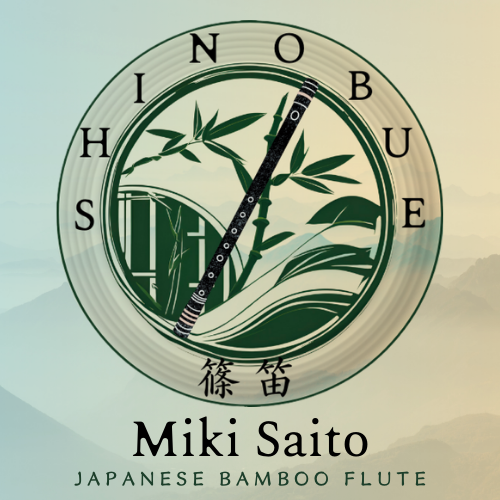Which shinobue method is correct??
I recently received a long question from one of our YouTube viewers. Here is a summary of their question.
"I’ve been playing the shinobue for about a month and a half...I’ve seen a number of instructional videos, but each one seems to suggest something different, which has left me pretty confused. I really want to avoid developing bad habits, so these were my questions:
- Am I supposed to lightly keep the lower lip on the bottom edge of the utakuchi? Or should the lower lip not block the utakuchi whatsoever in order not to block the air? Or perhaps around half of the lower lip should be in the utakuchi?
- Where exactly should I aim my breath, toward the middle of the utakuchi or the upper edge?
- Should the breath be directed straight across or slightly downward? Or is it situational?
- Some methods suggest keeping a "smile," but wouldn’t that go against the idea of keeping the lips relaxed?"
Let's break down his questions! 😃
"Each one of the instructional videos seems to suggest something different."
The shinobue is played by people from various backgrounds, each bringing their unique influences to the instrument.
For instance, my teacher, Bunta Satoh-sensei, began his journey with the side-blown bamboo flute during local festivals and religious ceremonies in his hometown of the Tsugaru region. He later adapted his Tsugaru flute technique to playing the shinobue, which heavily influences his style.
Similarly, Ms. Sarah Akiyoshi started as a Kagura flute player in the Hiroshima region before playing the shinobue as an adult. She applied the foundational techniques she learned while playing the Kagura flute to her shinobue performance. Here is Ms. Akiyoshi showing the example of Kagura flute playing.
Others, like Tatara Toki Sensei, began as Western flute players and eventually switched to the shinobue. Here is her interview that I recently released.
There are also individuals like Mr. Yasukazu Kano, who started as a Taiko player in the performing arts arena before picking up the shinobue. Here is one of his tutorial videos.
These diverse backgrounds illustrate that there are many ways to play the shinobue, and there isn't just one correct approach.
This phenomenon isn't unique to the shinobue; for example, if you study the piano with one teacher and then with another, you may encounter different techniques and philosophies regarding piano playing.
The shinobue technique I am sharing with you comes from my teacher, Bunta Satoh Sensei.
If you have your own teacher and my advice contradicts theirs, it's important that you follow your teacher's guidance, as you are learning their specific approach to playing the shinobue.
If you don't have a teacher, feel free to experiment with different techniques and see what works best for you.
However, there is one important thing to remember: regardless of the method you use, if any part of your body hurts while playing, then something is not correct. For instance, if the muscles around your mouth are painful after playing for a period of time, that's a sign that your technique needs adjustment.
Read my blog about body pain and shinobue playing.
Here are the answers to the specific questions according to Bunta sensei's way.
"Am I supposed to lightly keep the lower lip on the bottom edge of the utakuchi?"
Press the shinobue against your lower lip, not lightly, but not too tightly. You need to find the right pressure that works for playing all the notes beautifully and comfortably.
As a beginner, I was pressing too tightly and had to adjust to loosen it up. One of my students said he was pressing it too lightly, and his kan on improved when he began pressing it harder.
"Should the lower lip not block the utakuchi whatsoever?"
Bunta sensei says 80% of the utakuchi should be open. (However, it's important to note that the upper lip should be very close to the utakuchi opening so that the breath can reach the opening easily. If the utakuchi is too low, it encourages you to blow the air too hard.)
Photo courtesy: Nei-san, who is Bunta sensei's teaching assistant.
"Where should I aim my breath? What's the direction of the breath?"
Bunta sensei says to aim at the center of utakuchi. And aim at the bottom part of the utakuchi for ryo on 1 and 2. To reach the center of the shinobue, the breath direction should be downward.
"The smile position"?
I initially started playing the shinobue using the "smile position" because I had come across several articles recommending it. However, I've noticed that many professional players do not use this position, as it can lead to tension. So, why do some people still suggest it?
I believe the smile position might be the easiest way for some beginners to produce sound right away. For example, Suzuki shinobues, which I sell, come with a small tutorial packet that recommends the smile position. This advice is likely intended to help beginners make sound more easily, as Suzuki wants buyers to succeed with their instruments from the very beginning.
Nonetheless, as with any instrument, it’s essential to learn how to play in a relaxed manner as you progress. This approach helps build stamina, prevents injury, and allows for a more beautiful, free-flowing tone.
I hope this article clarifies some confusion and provides new insights! I would love to hear your thoughts—please feel free to reply to this email!



